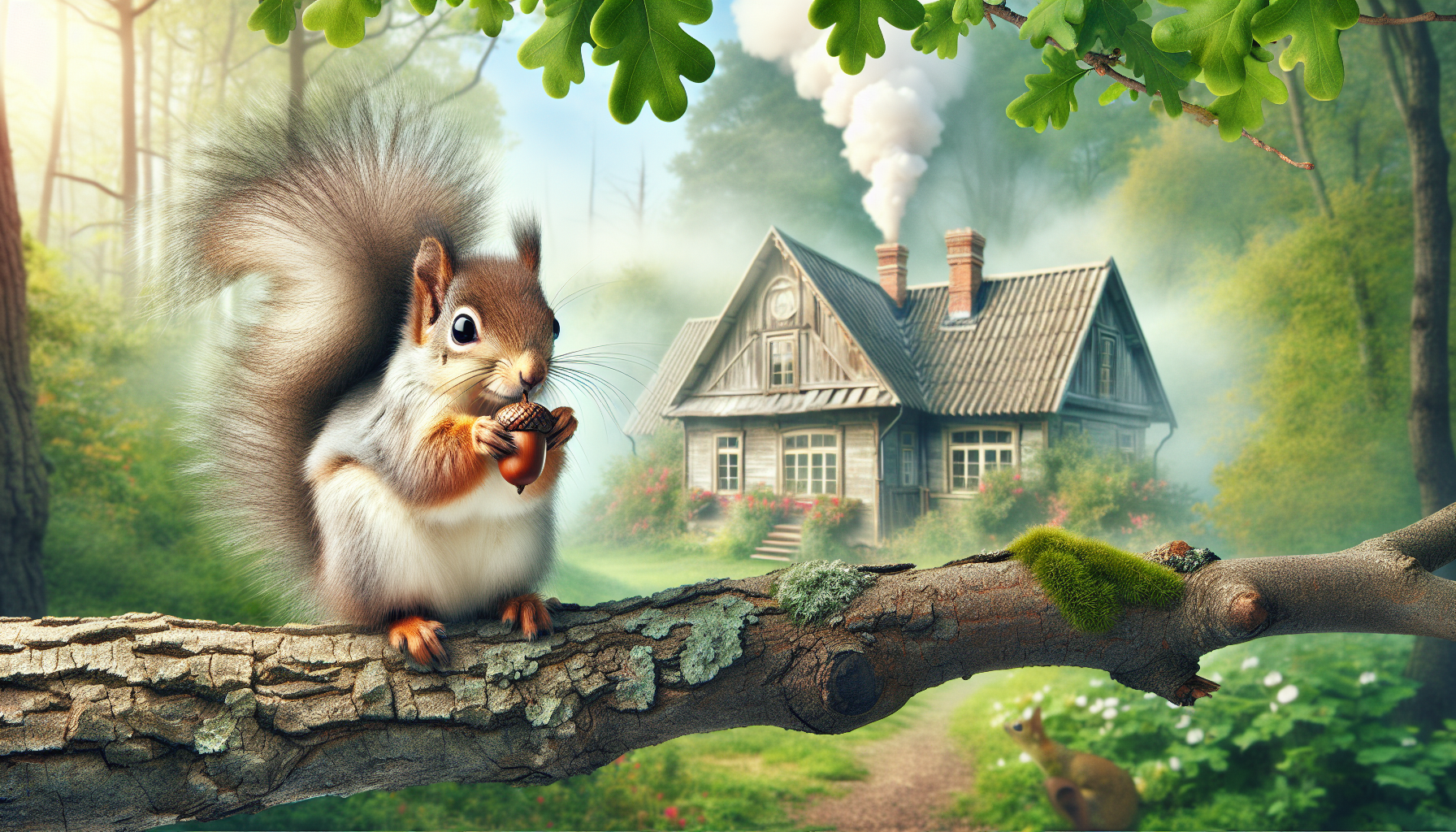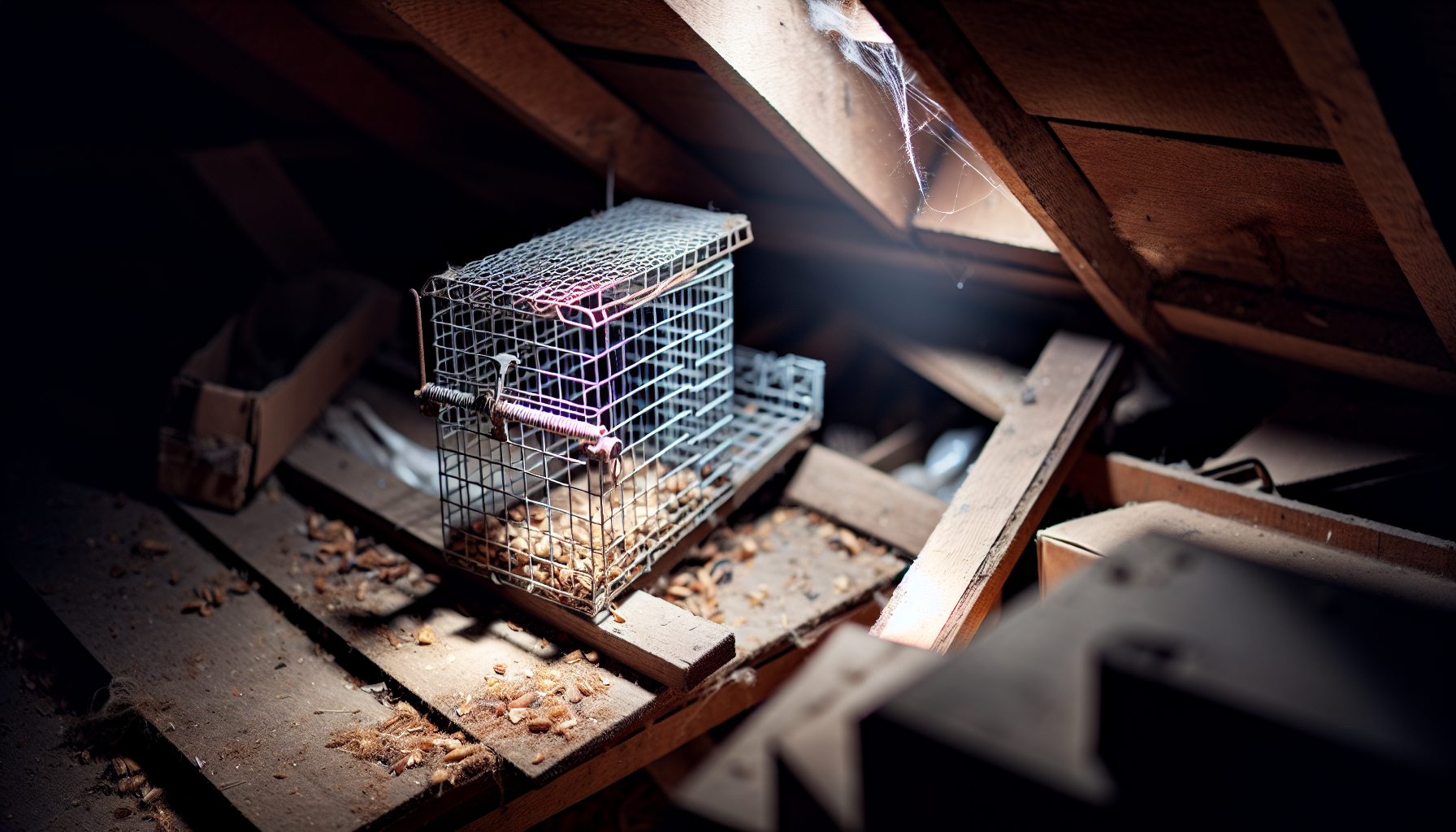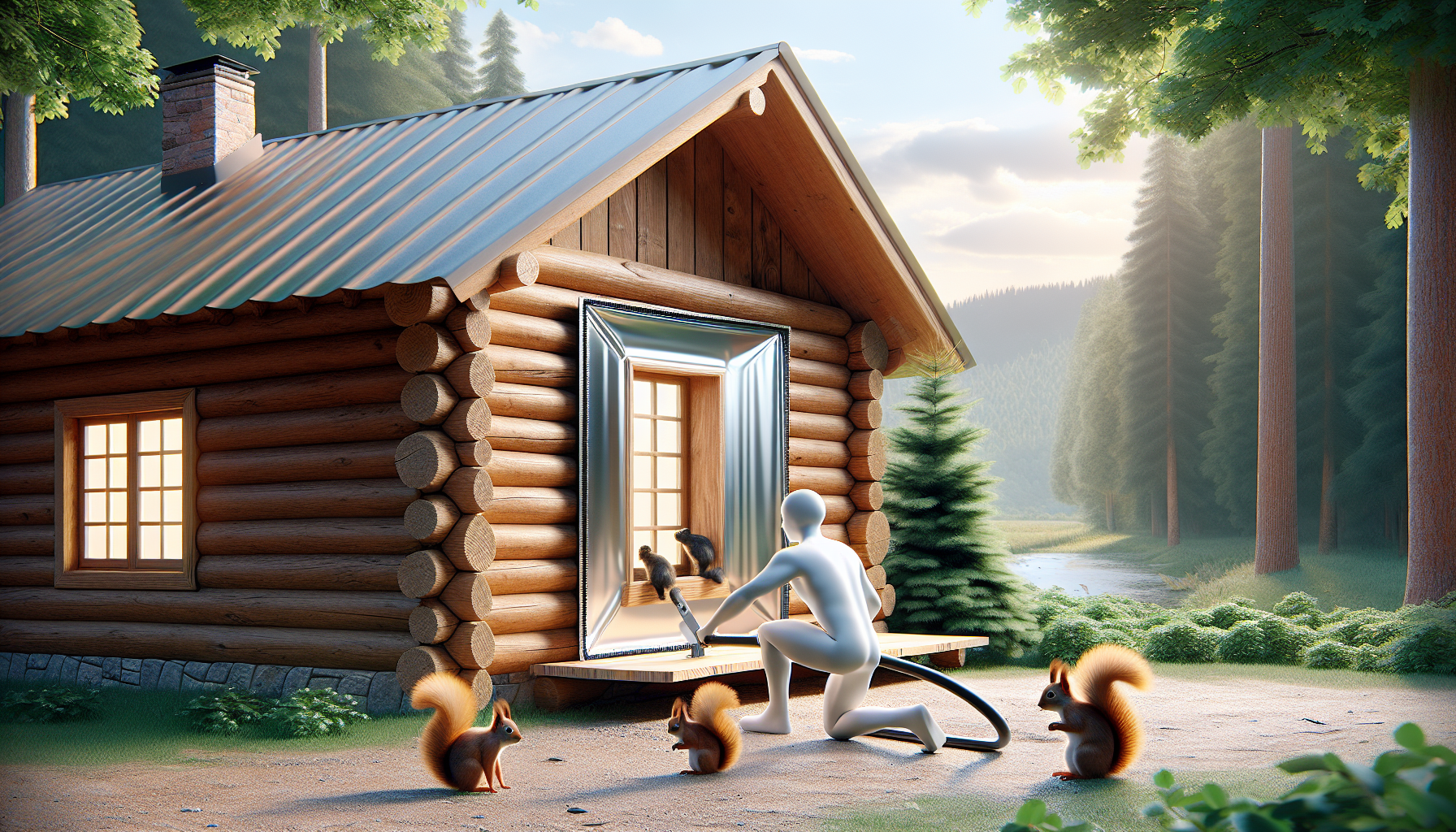Effective Squirrel Removal Strategies for a Rodent-Free Home
Are squirrels causing chaos in your home? Immediate squirrel removal starts here. Learn to identify signs of infestation, pick and place the right traps, and secure your home against repeat intruders. This guide gives you the necessary tools for a rodent-free residence without unnecessary fluff.
Key Takeaways
- Identifying signs of squirrel presence is crucial for effective removal, which includes addressing distinct noises, chewed structures, stolen birdseed, droppings, and visible nests.
- Efficient squirrel trapping involves choosing the right type of trap for the specific species and size of the squirrel and strategically placing traps in areas with high squirrel activity or known pathways.
- Preventing squirrel re-entry through exclusion tactics is as important as removal; this includes sealing entry points with materials like mesh hardware cloth and modifying habitats by removing food sources and shelter.
Identifying and Addressing Squirrel Infestations

Cute and fluffy as they may be, squirrels are notorious for causing significant damage to homes. From gnawing on wires and wooden structures to leaving droppings in your attic, they can turn your peaceful abode into a chaotic mess. Recognizing the signs of a squirrel infestation is the first step towards a squirrel-free home, but it doesn’t stop there. Getting rid of squirrels requires a strategic approach, as these small animals are more cunning than they let on.
For efficient squirrel prevention in your home, it’s necessary to put in place a variety of control strategies. This includes removing attractants such as accessible birdseed and acorns and taking precautions like trimming trees or tree branches close to your roof. These steps minimize the potential for squirrel entry into your home, including flying squirrels, which are known to be quite the acrobats.
Signs of a Squirrel Presence
Determining the presence of squirrels within your home forms the critical initial step in achieving efficient squirrel control. But how does one distinguish between the harmless rustling of leaves and the scurrying of a squirrel infestation? The tell-tale signs of a squirrel infestation include:
- Noises in the attic, such as scurrying and scratching
- Chewed woodwork
- Stolen seeds from bird feeders
- Squirrel droppings
- Runs or tracks in the insulation
- Gnaw marks
- Nests
The presence of baby squirrels can be detected by distinct sounds they make, which should be audible from the attic. Identifying these sounds can help in performing squirrel removal effectively. Variety in the sounds produced by different rodents necessitates the ability to tell them apart. For instance, squirrels are frequently associated with sounds such as scurrying, scampering, and scratching, whereas rats may produce squeaking and chattering noises.
Risks and Problems Associated with Squirrels
While squirrels may seem harmless, they can cause significant damage to property, particularly in the attic where they can damage insulation and electrical wiring. The prevalence of certain squirrel species in some regions underscores the need for familiarity with the specific types in your area. This requires a comprehensive understanding of the risks and problems associated with squirrels, from gnawed wires and wood to potential health hazards.
Apart from the physical damage, squirrels can spread diseases that could potentially affect humans and pets. Furthermore, squirrel activity can potentially create entry points for other pests into homes by using materials like insulation for their nests. Therefore, it’s crucial to address a squirrel infestation promptly and effectively to prevent further damage and ensure a squirrel-free home.
Removing Squirrels: Effective Trapping Techniques

Once you have identified a squirrel infestation and understood the associated risks, the next step is to remove the squirrels from your property. Efficient squirrel trapping techniques form a vital part of this process. But capturing these nimble creatures isn’t as simple as setting a trap and waiting. It involves selecting the right trap and placing it strategically to maximize success.
Choosing the appropriate squirrel trap is significant as it ensures a humane and straightforward process of removing squirrels from the premises. The type of trap chosen can vary depending on the species and size of the squirrel, as well as the location of the infestation. For instance, the Havahart #1077 Squirrel Cage trap is effective for larger Gray squirrel types, while traps with a 1/2-inch grid are recommended for smaller squirrels or rats to prevent escape.
Selecting the Right Squirrel Trap
Choosing the appropriate squirrel trap is vital for efficient squirrel extermination. When choosing a squirrel trap, several factors need to be taken into account such as the species and size of the squirrel, and the location of the infestation. The species of the squirrel can determine the specific problems to address, such as raiding bird nests, which would require a targeted trap. The size of the squirrel influences the selection of a trap since larger squirrels need traps with wider openings to ensure effective capture.
The location of the infestation significantly influences the choice of a squirrel trap. Factors such as the presence of tree nuts, fruits, berries, or signs of squirrel activity near birdfeeders, trash areas, or gardens can impact the effectiveness of the trap chosen for the specific scenario. Understanding these factors can help you select the most appropriate trap for your squirrel infestation, whether it is a flat snap trap, tube trap, or box trap.
Strategic Placement of Squirrel Traps
Knowing where to place squirrel traps can significantly enhance your chances of capturing these agile creatures. Optimal locations for strategically placing squirrel traps include:
- Near the entrances to your home
- In areas with evidence of high squirrel activity, such as where droppings, runs, or tracks are found
- Along utility wires, tree corridors, and interconnecting tree canopies
Positioning traps in these locations can yield high effectiveness.
However, trap placement is not the only factor that influences the effectiveness of trapping squirrels. The following factors also play a crucial role in successful squirrel eradication:
- The duration of the trapping effort
- Proper placement based on squirrel behavior and pathways
- Detection rates
- The abundance of squirrels in the area
Taking into account all these factors when setting up squirrel traps is paramount for effective and successful squirrel eradication.
Exclusion Tactics to Keep Squirrels Out

While trapping and removing squirrels from your property is a crucial step, it’s equally important to make sure they don’t find their way back in. This is where exclusion tactics come in. Exclusion tactics help keep squirrels out by sealing entry points and modifying their habitat to make it less appealing. By implementing these tactics, you can ensure a long-term solution to your squirrel problem.
Blocking potential entry points is necessary to curb squirrel intrusion as it limits their access to nesting areas. To effectively prevent squirrels from entering a property, mesh hardware cloth should meet the recommended size of 1/4’’. Alongside sealing entry points, you can also use a variety of exclusion products, such as copper mesh wool, Xcluder Fill Fabric, and Pur Black NF Foam, which block squirrel access points.
Sealing Entry Points
Blocking entry points ranks among the most efficient methods of keeping squirrels away from your home. The primary access points utilized by squirrels to enter a residence include:
- Roof vents
- Roof edges
- Roof-soffit intersections
- Gable vents
- Wall vents
- Plumbing mats
- Chimneys
By identifying these points of entry and sealing them, you can drastically reduce the chances of a squirrel infestation.
To seal these entry points, you can use materials like mesh hardware cloth, metal flashing, or exclusion products specifically designed for this purpose. Mesh hardware cloth should be employed with a small spacing to serve as a barrier and should be extended beyond the entry point to ensure that squirrels are unable to gain access. By effectively sealing all current and potential entry points, you stand a much better chance of preventing future squirrel infestations.
Habitat Modification Tips
In addition to sealing entry points, modifying the habitat around your home can also help deter squirrels. Squirrels are attracted to areas with easy access to food and shelter. By making these areas less appealing, you can effectively discourage squirrels from making your home their home.
To deter squirrels from accessing rooftops and make your property less appealing to them, you can:
- Trim tree limbs to eliminate overhanging branches
- Remove outdoor food sources like nuts, seeds, and fruits
- Eliminate shelter options like trees with nooks and crannies in the trunks where squirrels can nest
These measures can significantly decrease squirrel activity on your property.
Professional Wildlife Removal Services

While personal efforts can be effective in keeping squirrels at bay, sometimes professional wildlife removal services are necessary. These services offer expert intervention and guidance in squirrel removal and prevention, providing homeowners with peace of mind knowing that the squirrel problem is being handled by professionals. So, when should you consider hiring a professional, and how do you choose the right one?
Professional wildlife removal services provide expert intervention, including humane removal, effective exclusion, and long-term prevention strategies. The procedure typically involves a comprehensive inspection to evaluate the squirrel issue, after which they devise a customized plan to trap, eliminate, and seal all possible entry points. The estimated cost for professional squirrel removal typically begins at approximately $150, and the actual expenses can range between $325 to $550 for the trapping and relocation of squirrels.
The Benefits of Expert Intervention
Professional squirrel removal services present numerous advantages compared to do-it-yourself methods. They ensure the humane treatment of the animals by employing strategies such as animal traps, one-way doors, and repellents. Wildlife control professionals possess extensive knowledge and expertise to effectively get rid of squirrels using methods such as one-way traps. They are capable of implementing preventive measures to prevent squirrels from returning, ensuring safety for both humans and animals.
Alongside removal, a professional pest control company also provides long-term prevention strategies to avoid the recurrence of squirrels and repair any damages they may have caused, with some even offering a one-year guarantee on their services. Thus, hiring professionals not only ensures effective squirrel removal but also takes care of any collateral damage, making them a worthwhile investment for homeowners dealing with squirrel infestations.
How to Choose a Wildlife Control Provider
Selecting the appropriate wildlife control provider is essential for efficient squirrel removal. Several factors should be considered when making this choice, including the provider’s experience, licensing, and customer reviews. Experience holds significant importance as it signifies the provider’s knowledge, expertise, and their capacity to efficiently manage various wildlife situations.
Certifications such as the Wildlife Control Operator Certification provided by NWCOA, and specialized training in wildlife management services, showcase a provider’s dedication to professionalism and their proficiency in the field. Licensing ensures that the provider meets necessary requirements and adheres to regulations set by authorities, and insurance provides protection for both the provider and homeowners against any accidents or damage that may occur during the removal process.
Lastly, customer reviews serve as indicators of the provider’s historical performance in meeting client expectations.
Squirrel Behavior and Ecology

Comprehending the behavior and ecology of squirrels can significantly influence the development of efficient removal and prevention strategies. Squirrels possess unique habits and preferences that can provide valuable insights into how to deal with them. From their preferred habitats to feeding habits, these factors play a crucial role in managing squirrel infestations.
Squirrels are present in a wide range of natural habitats, such as boreal and coniferous forests, deciduous forests, grasslands, urban areas, and suburban neighborhoods. Their diet is diverse, consuming nuts, seeds, conifer cones, fruits, bird eggs, and nestling birds, among others. These factors, along with their physical characteristics and nocturnal activity, contribute to their detection and management.
Understanding Squirrel Habitats
Gaining knowledge of squirrel habitats can offer useful insights into their behavior and aid their management. Squirrels are present in a wide range of natural habitats, such as:
- Boreal and coniferous forests
- Deciduous forests
- Grasslands
- Urban areas
- Suburban neighborhoods
Tree squirrels and ground squirrels are commonly located in wooded environments with abundant tree resources.
Different squirrel species have varying habitat preferences depending on their geographical location. For instance, eastern gray squirrels are commonly found in Oregon, Washington, California, Montana, and British Columbia, whereas fox squirrels tend to favor farm country and woodlands adjacent to farm fields. Understanding these preferences can aid in developing targeted squirrel control strategies.
Feeding Habits and Attractants
Squirrels are attracted to residential areas by the availability of bird feeders, fruit trees, and gardens, as well as their preference for various nutritious foods including nuts, seeds, fruits, corn, insects, and bark. Bird feeders, in particular, are a major attractant for squirrels due to the availability of easily accessible seeds. To deter them from consuming fruits from your trees, you can cultivate mint around the trees or utilize deterrents such as Ro-Pel, capsaicin, hot pepper oil, and adhesive substances for trunks and limbs.
Gardens also attract squirrels due to the availability of food and shelter, such as trees with nooks and crannies in the trunks where squirrels can nest. Recognizing the feeding habits and attractants of squirrels enables you to take measures to make your property less attractive to them, thereby significantly lowering chances of squirrel infestation.
Repair and Recovery After Squirrel Damage
Following the removal of squirrels and the implementation of preventive measures, the subsequent step involves repairing the squirrel-inflicted damage and restoring your property. From chewed wires and wooden structures to droppings in your attic, the aftermath of a squirrel infestation can be quite significant. This section will guide you through the steps to repair and recover after squirrel damage.
Assessment of the damage inflicted by squirrels necessitates the identification and quantification of squirrel activity indicators such as dreys, feeding sites, and tree damage. Addressing structural damage in the attic involves the removal of damaged insulation, restoration of the attic, and repair of holes chewed by squirrels. Alongside this, the decontamination process involves the identification of areas with concentrated squirrel droppings and thorough cleaning and sanitization.
Assessing and Repairing Structural Damage
Evaluating the magnitude of squirrel damage forms a vital part of the recovery process. This involves identifying common indicators of squirrel damage such as:
- Teeth marks
- Gnawed electrical wires
- Wood debris
- Excrement in and around the squirrel nesting area
Furthermore, squirrels may create openings in the siding and beneath eaves through chewing, which need to be addressed as part of the repair process.
To repair squirrel-induced damage to insulation, you will need to:
- Replace any compromised insulation, wood, and electrical materials
- Use sheet metal and 1/4 hardware cloth to cover any entry points
- Install chimney caps to prevent squirrels from entering through the chimney
- Set up a box trap to catch and remove any remaining squirrels
- Install a small one-way squirrel door to allow squirrels to exit but not re-enter
By addressing the structural damage caused by the squirrels, you can restore your home to its former condition and prevent future infestations.
Decontamination and Cleanup
Post repair process, it’s necessary to decontaminate and tidy up the area to curb disease spread and discourage other pests. Squirrel waste, debris, and nesting materials can pose a health risk and should be removed as part of the cleanup process. During the cleanup, it’s important to wear appropriate personal protective equipment such as:
- Coveralls
- Work gloves
- Animal control gloves
- A hunting knife
- Game shears
These items will ensure your safety during the cleanup process.
To combat pathogens present in squirrel waste, follow these steps:
- Spray urine and droppings with a bleach solution or an EPA-registered disinfectant until thoroughly wet.
- Allow the solution to soak for 5 minutes or as per the instructions for the disinfectant.
- Pick up the waste and nesting materials using paper towels.
- Dispose of the waste in the garbage.
- Remove any waste in sensitive areas, such as air intake systems.
Summary
In conclusion, dealing with a squirrel infestation involves identifying the signs of infestation, understanding the behavior and ecology of squirrels, implementing effective trapping and exclusion techniques, and repairing and recovering from squirrel damage. By understanding the habits of squirrels and the problems they pose, homeowners can implement effective strategies to prevent squirrels from entering their homes and causing damage.
While personal efforts can be effective, sometimes professional wildlife removal services are necessary. These services offer expert intervention and guidance in squirrel removal and prevention, providing homeowners with peace of mind knowing that the squirrel problem is being handled by professionals. Remember, prevention is always better than cure. By implementing these strategies, you can ensure a squirrel-free home and protect your property from potential damage.
Frequently Asked Questions
What gets rid of squirrels in your attic?
To get rid of squirrels in your attic, block all entrances except one using materials like metal flashing, wire mesh, steel wool, and hardware cloth, and then use a one-way door to allow them to exit but not reenter.
Will squirrels leave attic on their own?
No, squirrels need to be forced to leave the attic. While a nesting mother may stay with her litter, most squirrels will leave when safety is compromised, and the mother will likely leave once the babies are old enough.
How long does it take to remove squirrels from attic?
You can usually remove squirrels from your attic on the same day if you use wildlife control exterminators or removal experts. This can provide a quick solution to your squirrel problem.
What noise scares squirrels out of attic?
To scare squirrels out of your attic, you can try banging pots and pans or leaving a radio playing at full volume overnight. A high-frequency sound machine may also be effective, but results are mixed.
What are some common signs of a squirrel infestation?
If you notice noises in the attic, chewed woodwork, stolen seeds from bird feeders, squirrel droppings, runs or tracks in the insulation, gnaw marks, and nests, you may have a squirrel infestation. Be vigilant for these signs to take appropriate action.
